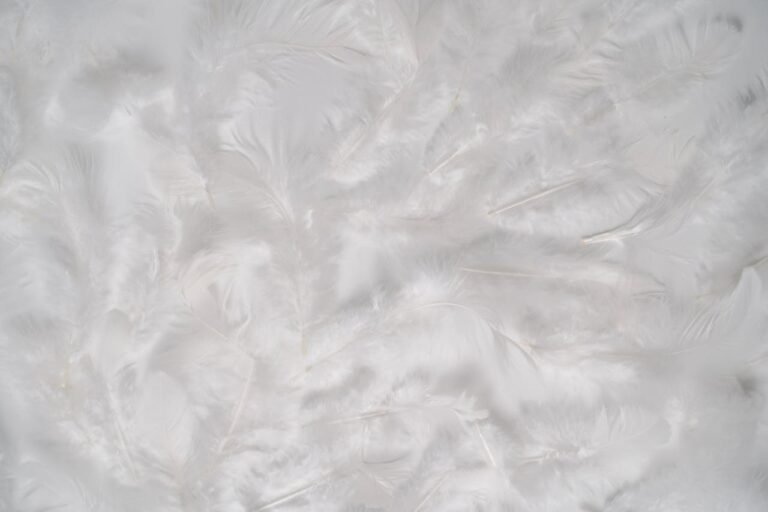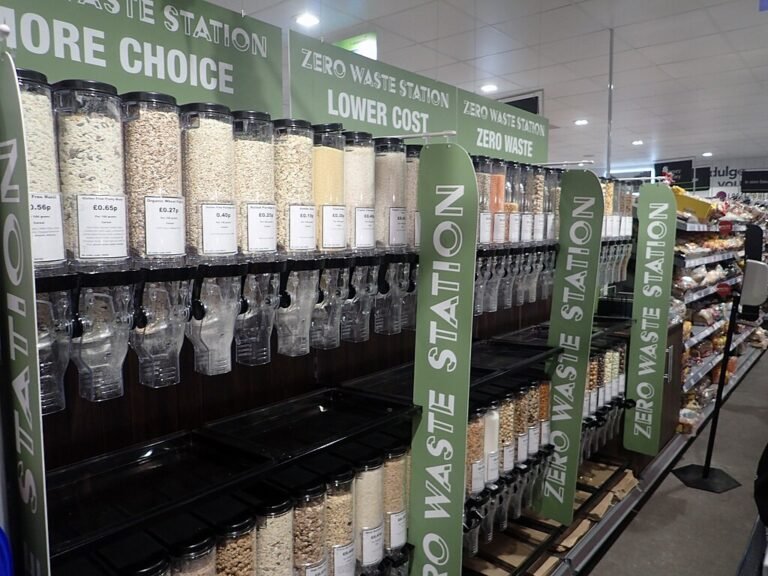What Are Flea Markets? History, Examples, and Sustainability
As someone who cares about sustainability, I find flea markets to be more than just places to shop—they’re a celebration of conscious consumerism, history, and community. You can discover everything from antique furniture and vintage clothing to handcrafted jewellery and rare collectables. Every item has a story, and every stall offers something special, whether it’s an old record with a rich past or a piece of handmade pottery crafted with love.
Flea markets are a perfect example of sustainable living in action. Instead of throwing things away, people buy, sell, and reuse, giving second-hand goods a new life. In a world where mass production dominates, these markets remind us that quality, craftsmanship, and history still matter.
But what I love most is the sense of community they create. Vendors and shoppers connect, share stories, and form relationships. It’s not just about what you buy—it’s about the experience, the people, and the joy of discovering something truly unique.

In This Article
- Defining Flea Markets
- A Brief History of Flea Markets
- 10 Famous Flea Markets Around the World
- Flea Markets and Sustainability
- Real-World Experiences and Expert Insights
- The Impact of Flea Markets on Sustainability
- How to Make the Most of Flea Markets
- Conclusion
Defining Flea Markets
A flea market is typically an open-air or indoor venue where individuals and small businesses sell a variety of goods, often second-hand, vintage, or handcrafted items. The term “flea market” is believed to be a direct translation of the French phrase “marché aux puces,” which means “market of fleas.” This name likely originated from the idea that used goods sold at these markets might harbour fleas.
These markets offer a diverse array of products, from antiques and collectables to artisanal crafts and everyday household items. Shoppers frequent flea markets not only to find unique and affordable goods but also to enjoy the experience of browsing through eclectic stalls, each with its own story to tell.
A Brief History of Flea Markets
The concept of flea markets dates back centuries, evolving through various cultures and eras:
- Ancient Trading Hubs: In ancient Persia and Greece, bazaars and agoras were central marketplaces where merchants and artisans sold goods, forming the foundation of today’s market culture.
- Medieval Europe: During the medieval period, local markets became integral to community life, allowing people to trade goods, including second-hand items, fostering a culture of reuse and sustainability.
- 19th-Century Paris: The term “marché aux puces” emerged in Paris in the 1880s, describing markets where affordable second-hand goods were sold. These became popular hubs for bargain hunters and treasure seekers.
- Modern-Day Popularity: Today, flea markets have become a global phenomenon, celebrated for their unique offerings and as symbols of sustainable consumerism. For instance, the “127 Yard Sale,” known as the World’s Longest Yard Sale, stretches across multiple U.S. states, attracting thousands of vendors and shoppers each year. These events highlight the enduring appeal of flea markets as spaces where history, culture, and commerce intersect.
10 Famous Flea Markets Around the World
1. Marché aux Puces de Saint-Ouen – Paris, France
Nestled on the outskirts of Paris, the Marché aux Puces de Saint-Ouen is often hailed as the world’s largest and oldest flea market. With over 2,500 stalls sprawling across several hectares, it attracts both locals and tourists in search of antiques, vintage clothing, and rare collectables. The market’s origins trace back to the 19th century, and wandering its labyrinthine alleys feels like stepping into a living museum. From art deco furniture to retro fashion, there’s something for every treasure seeker. Notably, Picasso was known to frequent this market, drawing inspiration from its eclectic offerings.

2. Portobello Road Market – London, England
In the heart of London’s Notting Hill lies Portobello Road Market, a vibrant stretch renowned for its antiques and vintage fashion. Every Saturday, the street comes alive as vendors set up stalls offering everything from antique maps and jewellery to retro clothing and vinyl records. The market’s lively atmosphere, coupled with the colourful Victorian-era buildings lining the road, makes it a must-visit destination. Arriving early is advisable, as serious shoppers often start their treasure hunting at sunrise.

3. Rose Bowl Flea Market – Pasadena, California, USA
Held on the second Sunday of each month, the Rose Bowl Flea Market is a destination for vintage enthusiasts and collectors. Located in Pasadena, California, this market boasts over 2,500 vendors selling a diverse array of items, from retro furniture and classic Americana memorabilia to vintage clothing and accessories. Its popularity is such that it often draws crowds in the thousands, including celebrities and interior designers seeking unique pieces.

4. El Rastro – Madrid, Spain
Every Sunday, the streets of Madrid’s La Latina neighbourhood transform into El Rastro, the city’s most famous open-air flea market. With roots dating back to the 15th century, El Rastro offers a mix of second-hand goods, vintage items, and quirky souvenirs across hundreds of stalls. Visitors can find everything from antique furniture and flamenco records to vintage clothing and rare books. The market’s vibrant atmosphere is further enhanced by street performers and tapas bars, making it a cultural experience as much as a shopping one.

5. Chatuchak Weekend Market – Bangkok, Thailand
Spanning over 35 acres with more than 15,000 stalls, Chatuchak Weekend Market in Bangkok is one of the largest markets globally. It’s a bustling hub where visitors can find an eclectic mix of goods, including handicrafts, home décor, vintage clothing, and art. Navigating its vast expanse can be overwhelming, but it’s also part of the adventure, with the promise of discovering unique items at bargain prices.

6. Jaffa Flea Market (Shuk Hapishpeshim) – Tel Aviv, Israel
Located in the ancient port city of Jaffa, this flea market offers a delightful blend of antiques, Persian rugs, and vintage clothing. Wandering through its cobblestone streets, visitors can explore charming cafés and boutiques that complement the market experience. The market’s vibrant atmosphere and diverse offerings make it a must-visit destination for those seeking unique Middle Eastern treasures.

7. Feria de San Telmo – Buenos Aires, Argentina
Set in the historic San Telmo neighbourhood, this market combines antiques with tango. Every Sunday, Plaza Dorrego and its surrounding streets come alive with stalls selling vintage items, artisanal crafts, and antiques. Live tango performances add to the market’s vibrant charm, offering visitors a rich cultural experience alongside their shopping endeavours.

8. Waterlooplein Market – Amsterdam, Netherlands
Located in Amsterdam, the Waterlooplein Market is a paradise for bargain hunters seeking unique finds. This market offers a wide array of items, from vintage clothing and accessories to antiques and collectables. Its central location and diverse offerings make it a popular destination for both locals and tourists.

9. Brooklyn Flea – New York City, USA
A trendy New York market, the Brooklyn Flea features vintage clothing, handmade goods, and delicious street food. It’s a gathering spot for artisans and collectors, offering a curated selection of unique items. The market’s vibrant atmosphere and diverse offerings make it a must-visit destination for those seeking unique treasures in the heart of New York City.
10. Kunst & Flohmarkt – Berlin, Germany
Held in Berlin, the Kunst & Flohmarkt is known for its blend of antiques, records, and local crafts. This market offers a unique shopping experience, with vendors selling a diverse array of items, from vintage records to handmade crafts. Its eclectic offerings and vibrant atmosphere make it a popular destination for both locals and tourists.
Learn More: Cradle-to-Grave: A Guide to Environmental Sustainability
Flea Markets and Sustainability
Flea markets play a crucial role in promoting sustainability in several ways:
Reducing Waste and Lowering Carbon Footprints
By purchasing second-hand items at flea markets, consumers extend the life cycle of products, diverting them from landfills and reducing the need for new manufacturing. This practice not only minimises waste but also decreases the energy and resources required for producing new goods, leading to lower carbon emissions. For instance, choosing second-hand clothing over new can reduce carbon emissions by an average of 25%.
Encouraging a Circular Economy
Flea markets epitomise the principles of a circular economy, where products are reused, repaired, and repurposed rather than disposed of after a single use. This model contrasts sharply with the traditional linear economy of “take, make, dispose.” By keeping products in circulation, flea markets help conserve resources and reduce environmental impact, fostering a culture of sustainability within communities.
Supporting Local Artisans and Small Businesses
These markets serve as platforms for local artisans and small business owners to showcase their handmade or upcycled products, boosting local economies and encouraging sustainable entrepreneurship. By sourcing materials locally and focusing on quality craftsmanship, vendors contribute to reducing the carbon footprint associated with mass production and long-distance transportation. This local focus strengthens community bonds and promotes economic resilience.
Promoting Sustainable Consumption Habits
Engaging with flea markets encourages consumers to reflect on their purchasing habits, fostering a shift towards more sustainable consumption. By choosing second-hand or upcycled items, individuals become active participants in reducing the demand for new products, thereby conserving resources and promoting environmental stewardship. This conscious consumerism is essential for driving broader societal changes toward sustainability.
Building Community Connections
Beyond their environmental benefits, flea markets are social spaces that strengthen community ties. They provide opportunities for people to interact, share stories, and build relationships. This sense of community fosters collaboration and collective action toward sustainable practices, creating a supportive environment for individuals to engage in eco-friendly behaviours. The communal aspect of flea markets enhances social cohesion and promotes a shared commitment to sustainability.
Real-World Experiences and Expert Insights
A Personal Story: Uncovering Hidden Treasures at Flea Markets
In 1989, a man browsing a flea market in Adamstown, Pennsylvania, purchased a painting for $4, primarily interested in its frame. Upon removing the canvas, he discovered a folded document tucked behind it. This document turned out to be an original 1776 printing of the Declaration of Independence, known as a Dunlap broadside. Initially valued at around $1 million, it was later sold at auction for $2.42 million in 1991 and resold for over $8 million in 2000. This remarkable find underscores the potential of flea markets to harbour hidden treasures waiting to be discovered by the keen-eyed shopper.
Expert Perspective: The Environmental Benefits of Second-Hand Shopping
Engaging in second-hand shopping, such as at flea markets, offers significant environmental advantages. According to the Center for Biological Diversity, “More than half of all greenhouse gas emissions are embodied in the things we consume. That’s why secondhand represents an essential tool for shifting our use of materials and building a world where humans and wildlife can thrive.”
Furthermore, a study highlighted in Scientific American found that extending the average lifespan of garments by purchasing second-hand can lead to substantial environmental savings. Specifically, quadrupling the lifespan of clothing items resulted in a 75% reduction in freshwater usage associated with processes like dyeing.
The Impact of Flea Markets on Sustainability
- Reduction in Textile Waste: Second-hand markets, including flea markets, play a pivotal role in diverting textile waste from landfills. According to the Circular Economy Journal, “Studies generally agree that both the reuse and recycling of clothing lead to a reduction in environmental impact compared to incineration and landfilling”
- Carbon Emission Reduction: Engaging in second-hand shopping can lead to a significant decrease in carbon emissions. The Circular Economy Journal notes that “embracing second-hand consumption instead of buying new clothes leads to up to 42% lower impacts for climate change and cumulative energy demand.”
- Economic Contribution: The global second-hand apparel market is experiencing substantial growth, with projections indicating it could reach $77 billion by 2025, driven by increased consumer demand for sustainable shopping options.
Learn More: 10 Greenwashing Examples
How to Make the Most of Flea Markets
1. Plan Your Visit
- Arrive Early: Early birds often find the best deals and selections.
- Bring Cash: While many vendors are adapting to digital payments, cash remains a preferred method for many.
- Dress Comfortably: Flea markets can be expansive. Wear comfortable shoes and attire suitable for walking and browsing.
2. Know What to Look For
- Authenticity: When eyeing antiques or collectables, research and verify their authenticity to ensure you’re getting value for your money.
- Upcycled Goods: Support sustainability by seeking out items that have been repurposed or upcycled.
- Respectful Bargaining: Haggling is common, but always approach negotiations with respect to foster positive interactions.
3. Think Sustainability
- Reusable Bags: Bring your own bags to reduce plastic usage.
- Minimal Packaging: Opt for items with little to no packaging to lessen waste.
- Repair and Refurbish: Consider giving new life to items through repair or refurbishment instead of always buying new.
Conclusion
Flea markets are more than just places to find bargains; they are cultural hubs that preserve history, promote sustainability, and support local economies. Whether you’re a collector, a sustainability advocate, or a casual shopper, visiting flea markets can be a rewarding and eco-friendly experience. Next time you step into a flea market, remember—you’re not just shopping; you’re participating in a movement that values reuse, history, and conscious consumerism.







